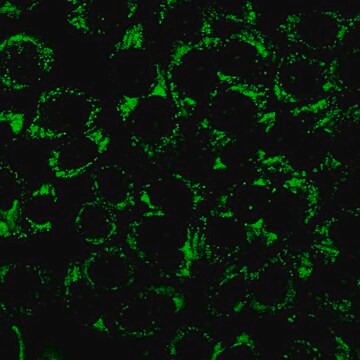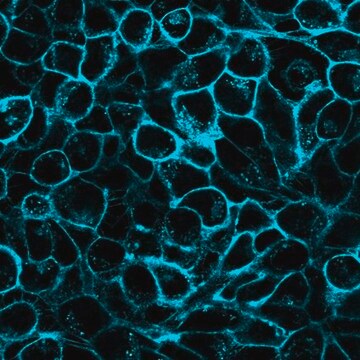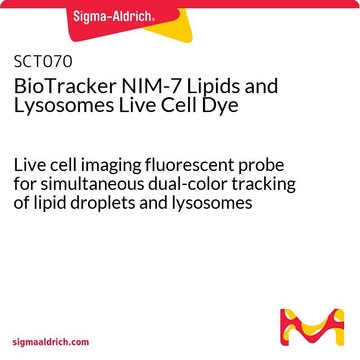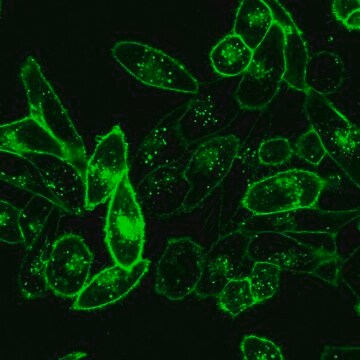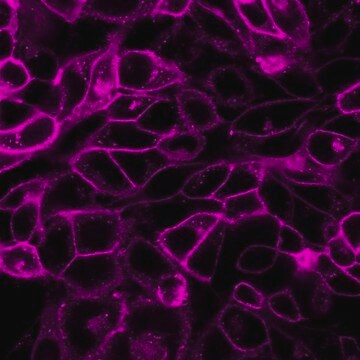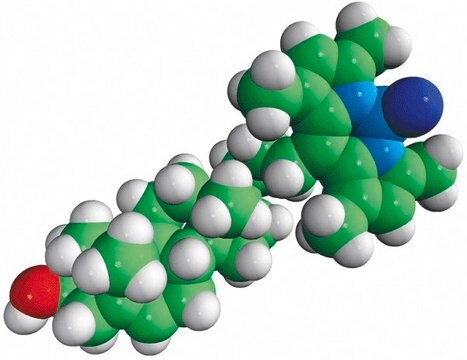SCT241
BioTracker™ LD-1 Near-IR Lipid Droplet Live Cell Probe
Synonyme(s) :
BioTracker™ LD-1 Near-IR Lipid Droplet Live Cell Probe, Lipid Droplet Live Cell Dye, Lipid Droplet Live Cell Probe, Lipid Droplet Probe, NIR Lipid Droplet Dye
About This Item
Produits recommandés
Conditionnement
vial of 1 mg
Niveau de qualité
Fabricant/nom de marque
Millipore
Technique(s)
cell culture | mammalian: suitable
flow cytometry: suitable
Méthode de détection
fluorometric
Conditions d'expédition
dry ice
Température de stockage
−20°C
Description générale
This LD-1 probe is chemically optimized for the low-polarity, high-viscosity microenvironment found in lipid droplets.
In contrast with Raman microscopy and transmission electron microscopy (TEM) fluorescent small molecule probes have been developed as promising tools for detecting LDs . Advantages of fluorescent LD probes include the capability for real-time and in vitro testing, plus excellent selectivity and sensitivity.
Spectral properties
Absorbance : 650 nm
Emission (max): 745 nm
Reference
Wu X, Wang X, Li Y, Kong F, Xu K, Li L, Tang B. 2022. A near-infrared probe for specific imaging of lipid droplets in living cells. Anal Chem. 94(11):4881–4888.
Application
Caractéristiques et avantages
Description de la cible
Forme physique
Stockage et stabilité
Informations légales
Clause de non-responsabilité
Code de la classe de stockage
11 - Combustible Solids
Classe de danger pour l'eau (WGK)
WGK 3
Point d'éclair (°F)
Not applicable
Point d'éclair (°C)
Not applicable
Certificats d'analyse (COA)
Recherchez un Certificats d'analyse (COA) en saisissant le numéro de lot du produit. Les numéros de lot figurent sur l'étiquette du produit après les mots "Lot" ou "Batch".
Déjà en possession de ce produit ?
Retrouvez la documentation relative aux produits que vous avez récemment achetés dans la Bibliothèque de documents.
Notre équipe de scientifiques dispose d'une expérience dans tous les secteurs de la recherche, notamment en sciences de la vie, science des matériaux, synthèse chimique, chromatographie, analyse et dans de nombreux autres domaines..
Contacter notre Service technique